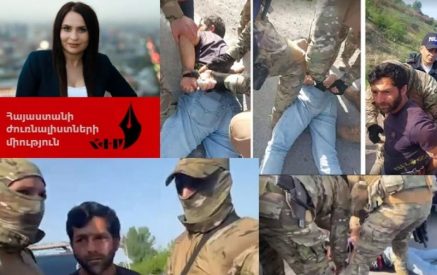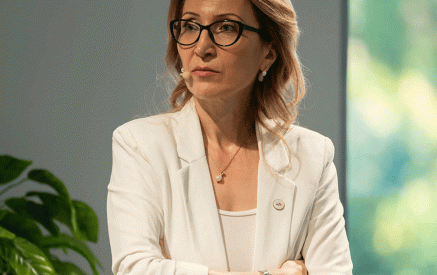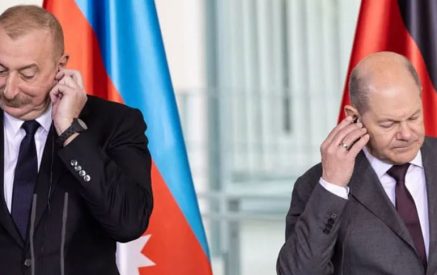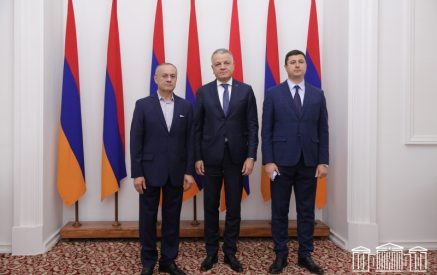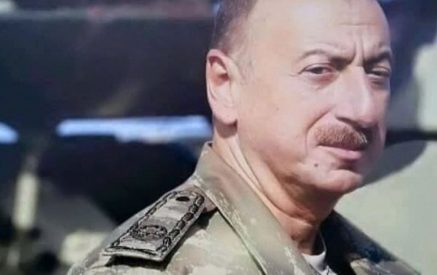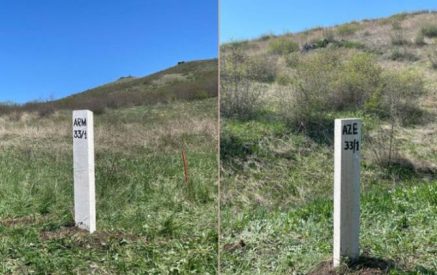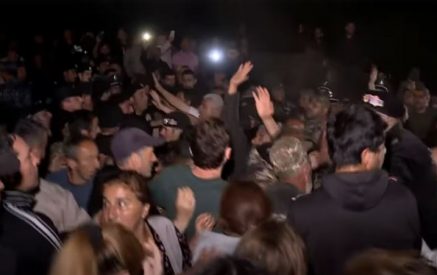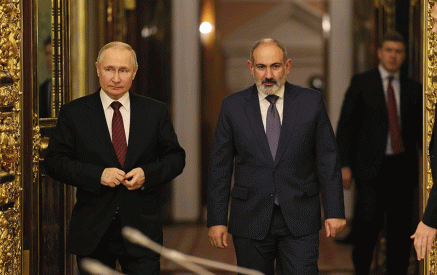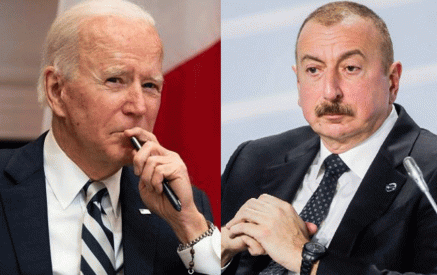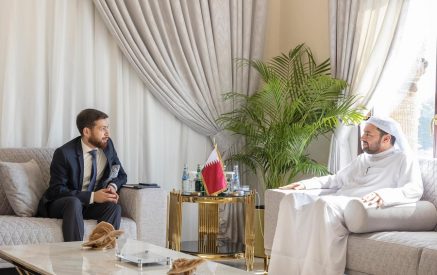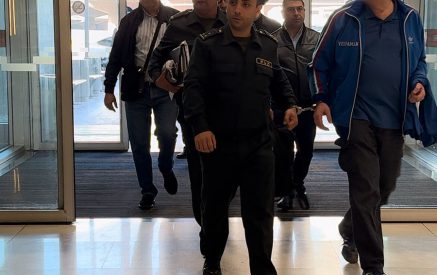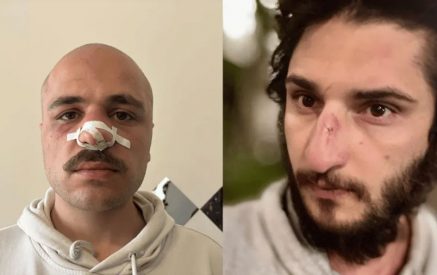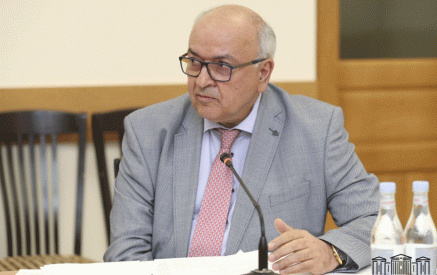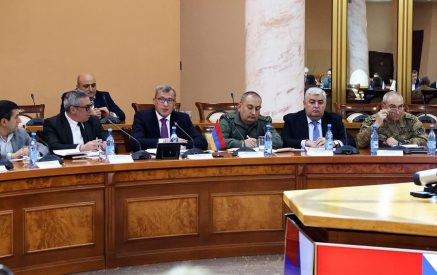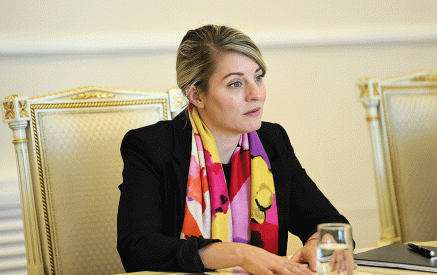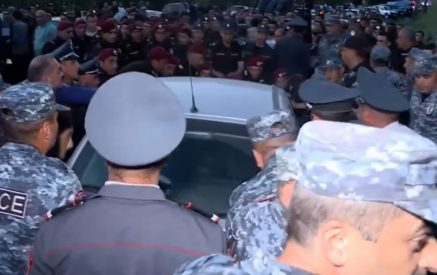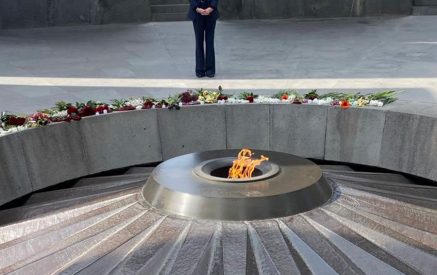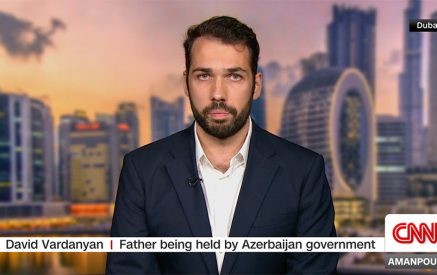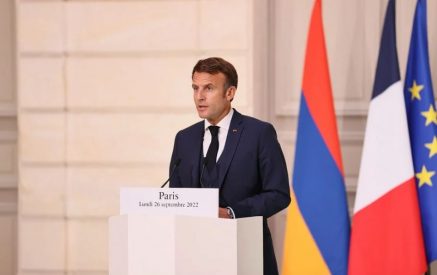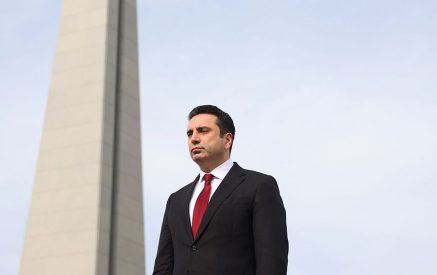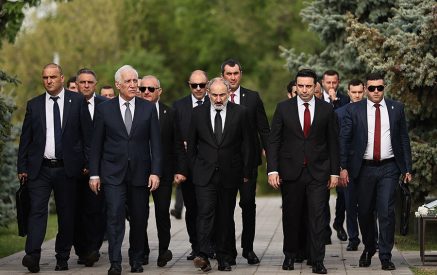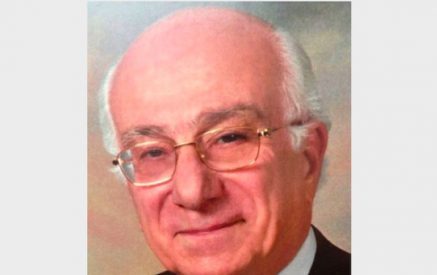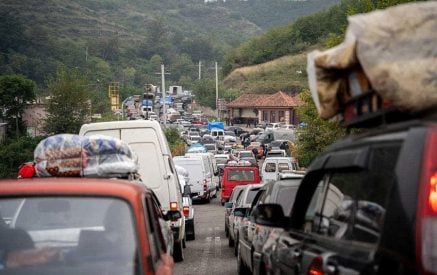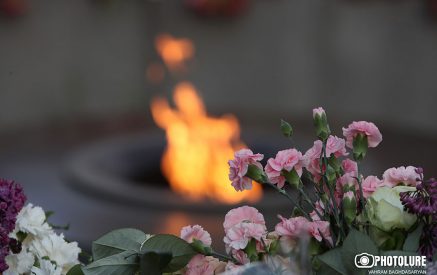By Vahan Zanoyan
“When the gods wish to punish us, they answer our prayers.”
—Oscar Wilde
Read also
The cataclysmic events of the past four years have transformed the fate and prospects of both the Armenian nation and the Armenian state. The state is too weak to tackle national challenges that transcend the affairs of the republic. The Diaspora must reorganize and relaunch itself in full force and, through uncharacteristic coordination and collaboration, and a dispassionate national vision, assume the guardianship of the nation globally.
______________
When Armenia declared its independence in 1991, a huge sigh of relief reverberated throughout the Armenian world. Part of it was obviously an expression of elation for the end of Soviet rule and finally, after 71 years, the reestablishment of an independent, sovereign Armenian state. But an important part was also due to the relaxation of the heavy burden of responsibility that the Diaspora institutions and families had carried to keep the Armenian culture, language, history, and national heritage alive. Even the campaigns for Genocide recognition, which was another critical mission of the Diaspora worldwide, would have rung hollow if Armenians assimilated and no longer cared about national causes. Political parties as well as significant non-political organizations took it upon themselves to keep, protect and pass on to the next generation the historic legacy of the Armenian nation, in its broadest sense. Substantial investments in time and scarce economic resources were made to build and fund schools, scholarships, churches, cultural and sports clubs, theaters and publishing houses.
It was an uphill struggle. The risk of assimilation in the culture of host countries, or in some broader global trend, was real. As communities grew into their second, third and even fourth generations in a foreign host country, it became increasingly difficult not only to keep their Armenian identity, but also to impart to the new generations a sense of why the historical and cultural legacy of the nation was relevant to their daily lives. But the struggle continued.
The reestablishment of an independent Armenian state thus caused a significant easing of the pressure for national preservation. It was a foregone conclusion that the nation-state would make sure that the Armenian identity and national heritage would never be lost. It would also be the homeland where the culture thrived and evolved on its indigenous path of national self-determination, and, as importantly for many Diasporan communities, it would be the champion to pursue Armenian national historical and legal rights.
This kick-started a holiday from the traditional Diasporan mission. But the holiday was neither productive nor idle; not productive, in the sense that it did not recharge and reinvigorate the Diaspora to reembark on its mission of national preservation. Instead, it led to a complex “mission confusion.” The Diaspora institutions were not sure what their new mission should be. Not idle, in the sense that the first natural impulse was to work to strengthen the state. Harnessing the pan-Armenian human and material resources to the service of the “Motherland” became a call that many heeded, and significant human and financial resources from the Diaspora poured into both Armenia and Artsakh, even though there were no easy and institutionally clear ways of relating to, and engaging in, the newly established Armenian state.
In the early 1990s, soon after Independence, Artsakh became the symbol of pan-national resistance and struggle. The victories of the first Karabakh war were marked with considerable collective effort, combining the forces and determination of the Republic of Armenia, Artsakh and the Diaspora. The participation of certain Diasporan organizations was instrumental in the outcome of that war. However, the 26 years between the Bishkek ceasefire protocol of 1994 and the 2020 war turned out to be the most disastrously wasted years in recent Armenian history, when a host of legal, diplomatic, and military opportunities to resolve the status of Artsakh were consistently missed.
The spirit of the Armenian national liberation struggle and resistance was briefly ignited again in Artsakh, especially during the blockade of the Lachin corridor by the Aliyev regime. After the depopulation of Artsakh, that too fizzled away. Now there is a huge vacuum in the space of national preservation and struggle. The government of Armenia, which currently is focused strictly on the defense of its 29,800 square kilometers, is unable and unwilling to fill that vacuum, and the Diaspora still lingers in a state of shock and confusion. The lack of a set of common national objectives remains the critical hurdle for a national regeneration.
____________
An independent Armenian state is an absolute value which should be protected at all cost. It has, nonetheless, exposed the nation to new vulnerabilities and challenges. During the Soviet Union, the Armenian national aspirations were largely sustained by the Diaspora institutions, often in secret collaboration with a patriotic intellectual class in the Armenian SSR. Armenia’s traditional enemies, Turkey and Azerbaijan, while successful in using the Soviet system to extract vast territorial concessions from both east and west of the border of today’s Republic of Armenia, found it next to impossible to kill the broader Armenian struggle for its national historical rights. Without an independent state, the nation was diligent and guarded, and being scattered around the world, it did not offer a clear and identifiable target. An independent state has not only provided the lullaby the enemy hopes would dull the will of the nation to struggle for its rights but has also presented the enemy with a clear and tangible target to focus on. After the 2020 war and the subsequent forced depopulation of Artsakh, facing a weakened government in Yerevan pleading for peace at any cost, Armenia’s enemies are determined to take maximum advantage of the potential to kill those national aspirations at home, through — and within — the very state which is supposed to protect them.
The challenges of the Diaspora have thus multiplied since Armenian Independence. The true game-changer came after the 2020 Artsakh war. Just like the country, the Diaspora found itself in an acute crisis. Having eased, if not totally relinquished its pursuit of national interests worldwide, it was helpless in the face of the most cataclysmic disaster to fall on the Armenian nation since the Genocide. It was then that in the most pressing and consequential issues of national interest, the Diaspora and the state often found each other acting more as distractors than as partners. Often, official state policies and statements were at cross purposes with the Diaspora’s lobbying and advocacy efforts in key Western capitals, such as the government’s unilateral concession of accepting Artsakh as part of the territorial integrity of Azerbaijan. Another celebrated case of this was the Prime Minister’s declaration that “there is no direct threat to the civilian population of Karabakh,” even as his Foreign Minister was trying to warn the UN of Azerbaijani atrocities and various Armenian grassroots advocacy and lobbying efforts were underway to highlight the existential dangers facing the ethnic Armenian population of Artsakh.
The Diaspora has a larger and more difficult mission today than it did prior to 1991. It should continue to support Armenian statehood with all the means available to it (often despite the blunders of the government), but at the same time it must reorganize itself to become an effective national preservation and resistance force—even more so than what it had evolved into after the Genocide. The threats facing the Armenian nation today are in some ways more dangerous than the ones in the aftermath of the Genocide, because, although imminent, they are more subtle, more indirect, and harder to see, especially for the average Armenian citizen living in Yerevan. Complicating that mission further is the fact that the path of least resistance of concerned citizens and some Diasporan compatriots is to relinquish the responsibility of the challenge to the authorities, even when it has become abundantly clear that the government is neither willing nor able to accept a national challenge that extends beyond the boundaries of today’s republic.
There are some national priorities and challenges which simply cannot and should not be abdicated to the state, especially when it is as weak as it is today, and when the vast majority of the nation’s resources and capabilities lie outside the state. Instead of wasting valuable resources in a futile and counterproductive struggle to change government policies, the Diaspora should focus on reorganizing and redirecting its resources to pursue broad national interests that transcend today’s republic, in effect creating parallel and auxiliary economic, political, and diplomatic capabilities next to those of the state.
The question arises, whether something like that is even theoretically possible. Here, it is worth briefly looking at the experience of the engagement of pan-Armenian human resources in Armenia since independence.
The record of success in engaging pan-Armenian resources in Armenia has been mixed, depending largely on the originator of the initiative and the sphere of activity in Armenia. Private initiatives in non-governmental and non-policy spheres have been by far the most productive, bringing considerable improvement to the capabilities of the country. These have included: Education (AUA, TUMO, COAF Smart Center, Armath, CSIE, Dilijan UWC, Matena, Teach for Armenia, AEF, AVC); Health care (particularly in cardiology, urology, breast cancer surgery, eye care, orthopedic care, dentistry); Science and Technology (UATE, FAST, Digitech, HIVE, ARPA Institute, Energize Global Services, Laser technology, certain military applications); Research and analysis (APRI, ASOF); Tourism (Tatev, Noravanq, Cafesjian Center, Hike Armenia, 1A One Armenia, Dilijan); Culture and arts (Hamzakayin, AGBU, Creative Armenia, Tekeyan Center, ReAnimania); Social Services (ARS, Orran, Huso Aygi, Mer Doon, WRC); Other spheres (Tufenkian Foundation, Hovnanian Foundation, CFTJ, Repat Armenia, Birthright Armenia, Aurora Prize, The Future Armenian, Arar Foundation, EVN Report, Civilnet).
While these initiatives, the list of which is by no means exhaustive, have changed the profile of Armenia beyond recognition since Independence, they have generally been less effective in changing the existing systems. Rather, they created substantial capabilities parallel to the existing ones, but did not seek nor were allowed the necessary access to reform what was there. This is particularly true in the education sector, where the new initiatives added considerable quality and weight to Armenia’s education resources as separate islands of excellence but did not improve the local state education system. The same is true albeit to a slightly lesser extent in the healthcare sector. In science and technology, government bureaucracy and incompetence have been the main bottlenecks restricting the practical application of Armenia’s considerable private sector-generated scientific and technological capabilities to national defense.
While private initiatives in non-governmental and non-policy spheres made an impact, private initiatives in governmental and policy spheres were virtually dead upon arrival. As for government initiatives, there is only one institutionalized initiative, the iGorts program, with mixed success. The main impediments to a more meaningful engagement of pan-Armenian resources in Armenia have been analyzed elsewhere and will not be repeated here.
What lessons can be learned from the Diaspora’s engagement in Armenia in the past thirty years that can be extended into the Diaspora’s pursuit of broad national interests outside the scope of government policy in Armenia?
The most important lesson is to leave what’s there and launch a parallel effort, with the aim of creating a parallel reality, just like the private sector did in the many spheres described above. If the private sector had fought the local system instead of building its own islands of excellence next to the existing structures, it would not have achieved much, and it would have alienated the establishments in the country.
Granted, there are much more formidable obstacles to doing the same in the pursuit of national interests and causes. Paradoxically, the biggest obstacle is the distinct possibility of having to adopt a different narrative than that of the government. The fact that diplomacy is conducted at a state-to-state level further complicates the Diaspora’s task when the state acts at cross purposes to a broader national agenda put forth by the Diaspora. Prior to 1991, Diaspora organizations could find some justification in approaching foreign governments, because there was no independent Armenian state as an official state-level counterpart to them. Today, that is harder to do, especially when the state either does not pursue the same national agenda or contradicts the claims of Diaspora organizations.
But the resources of the Diaspora should not be wasted just because they do not always find traction in the Republic of Armenia. The Diaspora is a legitimate stakeholder in both the Armenian state and in the broader national interests. It has an impressive record of achievements while without a state; it can surely find ways to achieve more, working either with, or, if need be, around official Yerevan. The helplessness of the Armenian government should never be allowed to pass on to the Armenian nation. The Armenian nation has been, and still is, larger and more permanent than the state, let alone today’s government.
As long as Azerbaijan has the support of formidable enablers like Turkey, Israel and Russia, no Armenian state in the foreseeable future will be able to defend itself alone. But the resources of the entire Armenian nation can in fact defend the state. The hurdle remains the formality between state and nation, which in the case of Armenia is destructive. The Diaspora must reorganize itself to assume the guardianship of the nation, while the state worries about the formalities of the state. That can be the winning paradigm in the short term, until the state acquires the strength to become a custodian of both the republic and the aspirations of the broader nation. But for now, when the state has already declared the abdication of its responsibility toward the nation, it remains for the Diaspora to declare the adoption of its responsibility towards both the nation and the state.
To meet this challenge, the Diaspora must somehow acquire uncharacteristic internal cooperation and a dispassionate national vision, which, admittedly, it does not have today. It should also come out of its current doldrums and adopt an entirely new, innovative approach, in line with the new global circumstances and the nation’s challenges. This will seem impossible to many. But no consequential human achievement has ever been realized by believing that what seems impossible today will necessarily also be impossible tomorrow.
The challenge involves activities in a minimum of five broad directions:
—A coordinated and collaborative effort to revive and invigorate the Armenian educational institutions throughout the world, where ideally a “common” national Armenian education is taught, in addition to a competitive modern education.
—A coordinated and collaborative effort to create an effective global Armenian business network, with the ultimate objective to have a seat at the table of global economic interests.
— A coordinated and collaborative effort to cultivate entrenched professional and diplomatic relations with key global NGOs and think tanks, to have a say in shaping the policy-making mindset around the world.
— A coordinated and collaborative effort to keep up with and have a presence in the technological and AI developments around the world.
— A coordinated and collaborative effort to launch a professional and consistent information war and projection of soft power of Armenian history and culture worldwide.
The last four points above aim to establish global political leverage on par with the challenges facing the Armenian state. The Armenian side is confronted with the aggressive and well-funded Turkish and Azerbaijani lobbies in Western capitals. The Diaspora’s response should be as robust in this political confrontation.
Ideally, it should have been the state to assume responsibility of coordinating an effort of this magnitude, acting as the magnet to draw all the resources of the Diaspora and harnessing them to a common vision. But all four governments of the Third Republic have proved to be incapable of that task, with the current one refuting even the premise of such a responsibility.
Much more can be said about these five directions and how they can be pursued, but this is not the place for that. Suffice it to say that the 30-year holiday of the Armenian Diaspora has ended. It is time to go to work.
_________________
Note on the term “Diaspora”: The Armenian Diaspora is diverse. The Diaspora of the descendants of survivors of the Armenian Genocide is an entirely different entity than the Diaspora of Armenian citizens who migrated from Armenia to Glendale in the past 30 years. Then there are the old Armenian settlements in the US, notably Boston area, and the Russian-Armenian Diaspora, the communities in France, the second wave of migrations from Syrian and Lebanon into the Arabian Gulf countries, the old Iranian Diaspora, and so on. The newest members of the “Diaspora” phenomenon, of which I consider myself a member, are the repatriated Diasporans, who have established residency in Armenia and have become tax-paying citizens of the country but are still by and large considered part of the Diaspora. In this article, when referring to the Diaspora, I primarily have in mind part of the Diaspora that has a direct physical, historical and spiritual connection with Armenia; this includes important elements of the descendants of the survivors of the Genocide, the repatriated Diasporans, as well as recent immigrants from Armenia.
(Vahan Zanoyan is a global energy and security specialist. Over a span of 35 years, he has advised 15 different governments on economic development policy, energy sector strategy, national security, and global competitiveness. He has also served as a consultant to numerous international and national oil companies, banks, and other public and private organizations. Author’s Note: This article discusses issues and critiques specific policies of the government of Armenia. It intentionally does not name any Armenian government official, and does not use derogatory adjectives, in order to remain faithful to the recommendations of another article on literate and consequential public political discourse.)

